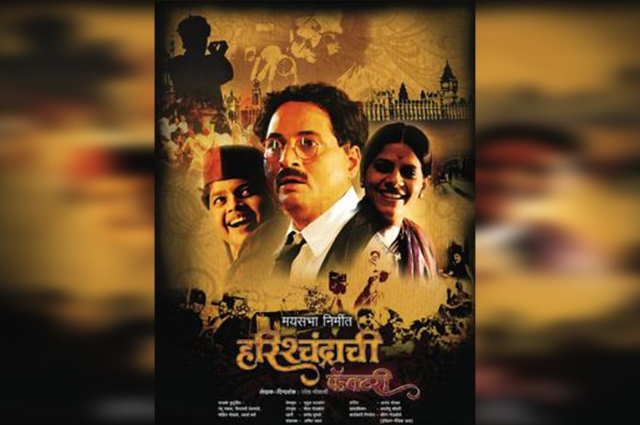A picture is worth a thousand words, a moving picture is worth even more. In 1911, British India, Dhundiraj Govind Phalke stumbled upon a tent, screening motion pictures. He is fascinated by this strange new development and the camera used for projection. His interest became a thirst to make his dream come true. He wanted people to appreciate this new venture, instead of fearing it. So, with the support of his family, he goes on a journey to make India's first motion picture, "Raja Harishchandra.
This 2009 film marked the directorial debut of Paresh Mokashi, who went on to win the Best Director award at the Pune International Film Festival. India's official entry for the Academy Awards in the Best Foreign Language Film category made it the second Marathi film to gain this honor. The movie inculcates the message of going after one's dreams and not letting small hurdles block one's path. If you believe in your dreams enough to chase them to the ends of the Earth, there will always be people who will help you, no matter the criticism. It is a drama-comedy, a feel-good movie which keeps the 2-hour-long movie interesting.
Phalke (played by Nandu Madhav) went against what was deemed acceptable in society. With social constraints on women appearing on screen, political unrest, and financial problems, the movie subtly touches upon all aspects. Throughout the movie, there are three instances where Bal Gangadhar Tilak's imprisonment is mentioned, along with a glimpse of the Kesari newspaper. When the Lumiere Brothers first screened their moving picture "Arrival of a Train" in Mumbai (1896), people ran out of the tent, afraid that the train would run them over. This was shown as a humorous scene when a lady ran out of the tent screaming at the bull on screen. Another historically accurate fact was the music played by artists in between screenings. This was a continuous practice until the era of sound films began.
The movie showcases a lot of scenes in a fast-forward manner where it shows either preparations or a long amount of time. These fast-paced scenes give a Charlie Chaplin episode vibe where the visuals and sound make it lively and humorous. Though it is light-hearted and makes problem-solving fun, certain parts are true tearjerkers. It induces a rollercoaster of emotions which is sure to keep you reeling. Phalke wanted to bring Indian culture into the world of cinema. While the Western world had moved onto fictional storytelling well, Phalke brought in beloved religious stories that portrayed India in its truest colors.
The evolution of cinema in India began like any other discovery: with fear of accepting something new. Phalke compared the camera and motion pictures with trains. When trains were first introduced in the country, people believed them to be monsters made of iron. But in the way trains were accepted into the everyday lives of the local people, motion pictures went on to touch millions of hearts with their storytelling.
Harishchandrachi Factory is a delightful biography of India's first-ever movie and with its wisecracks and subtle jokes, it is a movie to be enjoyed by people of all age groups. A marvelous story of a man who pursued his dream relentlessly and became a legend, who is remembered and revered as the Father of Indian Cinema.

